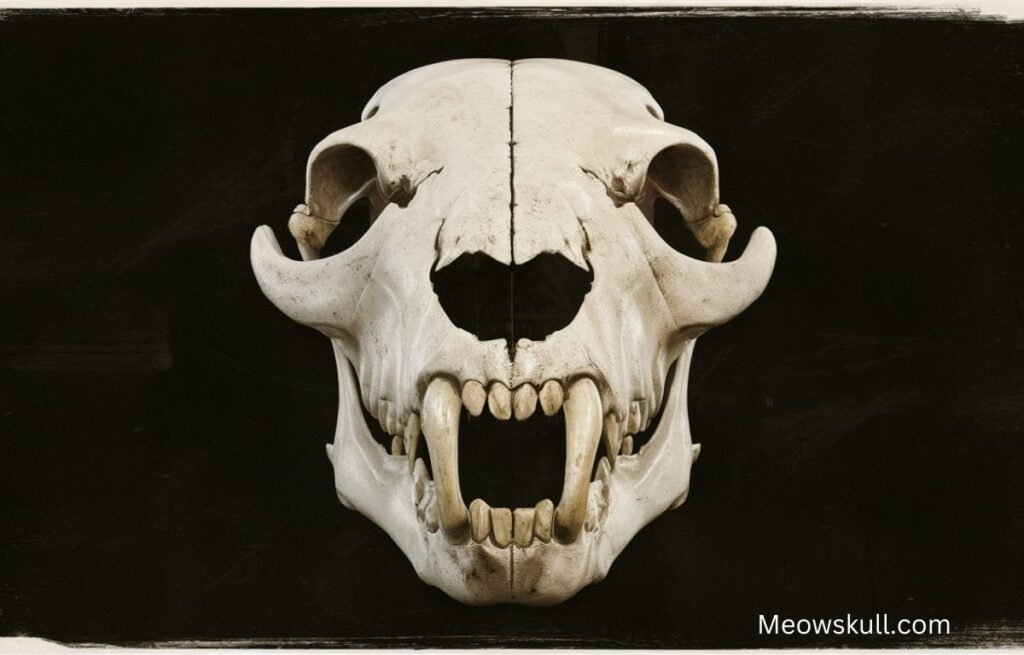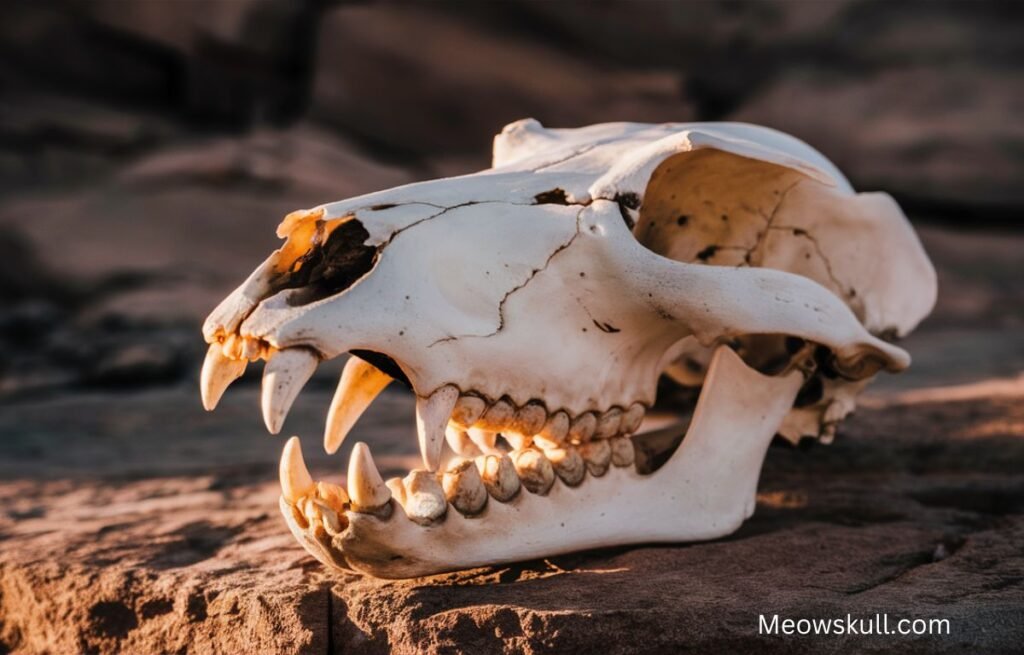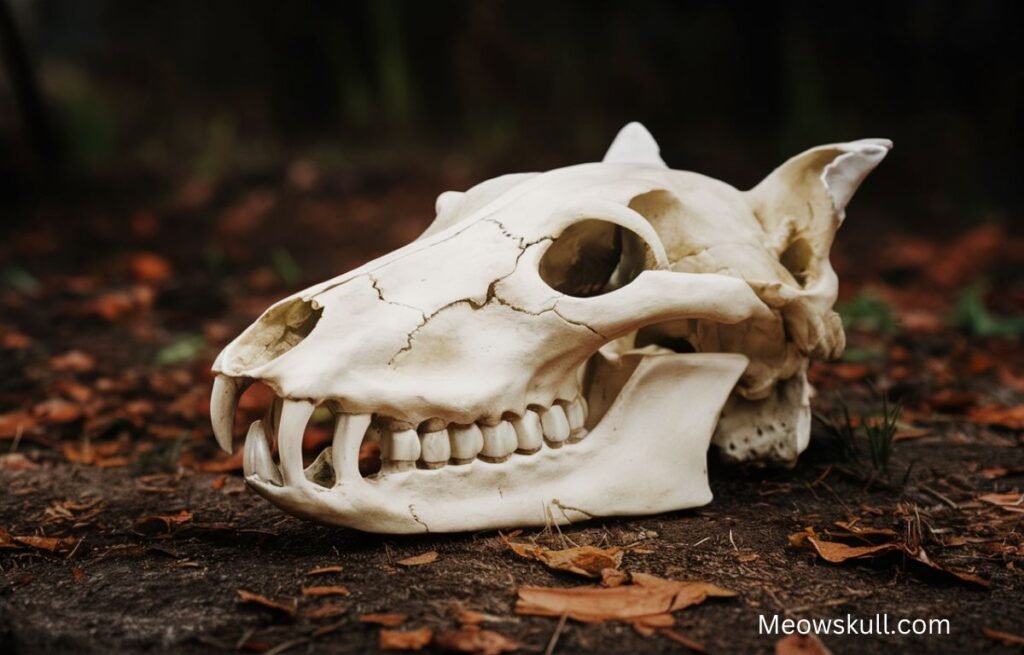The coyote is one of North America’s most adaptable and widespread carnivores, thriving in diverse environments from rural woodlands to urban neighborhoods. While these creatures are often associated with their distinctive howls, another aspect of their biology—the coyote skull—offers a window into their survival strategies, hunting behaviors, and evolutionary history. In this article, we will delve into the anatomy, significance, and the broader implications of studying coyote skulls.
Introduction to Coyotes and Their Skulls
Coyotes (Canis latrans) have long been a symbol of wilderness and adaptability in North America. Unlike other species that have struggled to survive human encroachment, coyotes have thrived, expanding their range from their original habitats in the Great Plains to almost the entire continent. Their success can be attributed to their cunning nature, diverse diet, and adaptability.
A crucial component of the coyote’s survival toolkit is its skull. The coyote skull is not just a bone structure but a blueprint of its lifestyle, diet, and behavior. By studying the coyote skull, we can gain insights into the animal’s role in the ecosystem and its evolutionary adaptations.
Anatomy of a Coyote Skull
The coyote skull is a masterpiece of evolutionary engineering, designed for maximum efficiency in hunting and scavenging. Here are some key features:
- Size and Shape: The coyote skull typically measures around 6 to 8 inches in length, with a slender, elongated snout. This shape allows for a heightened sense of smell, essential for tracking prey over long distances.
- Teeth: The dental structure of the coyote is particularly notable. Coyotes have 42 teeth, including sharp canines for gripping prey, premolars for tearing flesh, and molars for crushing bones. The sharpness and placement of these teeth are ideal for a carnivorous diet, though coyotes are also known to eat fruits and vegetables when necessary.
- Cranial Features: The coyote skull has a pronounced sagittal crest, a ridge of bone running along the top of the skull. This crest provides attachment points for strong jaw muscles, enabling the coyote to exert powerful bites. The skull also features a large braincase, indicating a high degree of intelligence and problem-solving abilities.
- Nasal Cavity: The elongated snout of the coyote houses a complex nasal cavity with numerous olfactory receptors. This allows the coyote to detect a wide range of scents, a crucial ability for both hunting and avoiding danger.
Understanding these anatomical features is vital for anyone interested in the study or collection of coyote skulls.
Also Read: The Fascinating World of Fox Skulls: A Comprehensive Guide
The Role of the Coyote Skull in Survival

The coyote skull is more than just a static structure; it plays an active role in the animal’s survival. Here’s how:
- Hunting and Feeding: The strong jaws and sharp teeth of the coyote are essential tools for capturing and consuming prey. The shape of the skull also aids in tearing meat and crunching through bones, allowing coyotes to consume a wide range of foods, from small mammals to carrion.
- Senses: The shape of the coyote skull enhances its sensory capabilities. The large eye sockets suggest keen eyesight, particularly in low-light conditions, while the complex nasal structure indicates an acute sense of smell, both of which are crucial for detecting prey and navigating their environment.
- Communication: Coyotes are known for their vocalizations, and the skull’s structure plays a role in producing these sounds. The large nasal cavity and elongated snout help amplify their howls, barks, and yips, which are used to communicate with other members of their pack and to ward off intruders.
Comparison with Other Canid Skulls
The coyote skull shares similarities with those of other canids, such as wolves, foxes, and domestic dogs, yet it also has distinct features that set it apart.
- Wolves: The wolf skull is larger and more robust, reflecting the wolf’s role as a top predator. While both species share similar dental structures, the wolf’s skull is adapted for taking down larger prey and exerting more powerful bites.
- Foxes: Fox skulls are smaller and more delicate, reflecting their diet of smaller animals and their less aggressive hunting strategies. The fox’s elongated snout is similar to that of the coyote but is less pronounced.
- Domestic Dogs: Domestic dog skulls vary widely due to selective breeding, but in general, they are less specialized than coyote skulls. While some breeds share similarities with coyotes, especially in the dental structure, most domestic dogs lack the pronounced sagittal crest and other features that enable the coyote’s survival in the wild.
By comparing these skulls, we can better appreciate the unique adaptations of the coyote skull and its role in the animal’s success across diverse environments.
Evolutionary Insights from Coyote Skulls
The study of coyote skulls provides valuable insights into the evolutionary history of the species. Over time, the coyote has adapted to various environmental pressures, leading to changes in skull shape and size.
- Adaptation to Diet: The coyote’s omnivorous diet has influenced its skull structure. Unlike species that specialize in certain types of prey, the coyote’s skull reflects a more generalized approach, with teeth and jaws capable of handling a wide range of foods.
- Hybridization: In some regions, coyotes have interbred with wolves and domestic dogs, leading to hybrid offspring with unique skull characteristics. These hybrid skulls often show a blend of features, such as the size of a wolf’s skull with the shape and dental structure of a coyote.
- Environmental Pressures: As coyotes have expanded their range into urban areas, their skulls have shown signs of adaptation, such as changes in size and shape to accommodate new dietary and environmental challenges.
The evolutionary journey of the coyote skull is a testament to the species’ resilience and adaptability, making it a fascinating subject for further study.
Also Read: Bear Skull: The Fascinating World of Ursine Craniums
Cultural and Historical Significance of Coyote Skulls

Throughout history, the coyote has held a significant place in the mythology and folklore of various cultures, particularly among Native American tribes.
- Mythology: In many Native American traditions, the coyote is portrayed as a trickster figure, a symbol of both cunning and survival. The coyote skull is often seen as a powerful totem, representing these qualities and serving as a reminder of the coyote’s role in the natural world.
- Art and Symbolism: The coyote skull has been used in various forms of art, from traditional carvings to modern sculptures. It symbolizes the wild, untamed nature of the American landscape and the coyote’s ability to thrive despite adversity.
- Ritual Use: Some cultures have used coyote skulls in rituals and ceremonies, believing they possess spiritual power. These practices reflect the deep respect and reverence many cultures have for the coyote.
The coyote skull is not just a biological artifact but a cultural symbol with deep historical roots.
Coyote Skull Identification and Collection
For those interested in collecting coyote skulls, proper identification is essential. Here are some tips:
- Size and Shape: As mentioned earlier, the coyote skull is typically 6 to 8 inches long, with a slender, elongated snout. Its shape is more delicate than that of a wolf but larger than a fox.
- Teeth: The dental structure is a key identifier. Look for the sharp canines and well-developed molars that are characteristic of coyotes.
- Sagittal Crest: This ridge of bone along the top of the skull is prominent in coyotes and can help distinguish their skulls from those of other canids.
- Nasal Cavity: The elongated snout and large nasal cavity are distinctive features of the coyote skull.
When collecting coyote skulls, it’s important to ensure that the specimens are ethically sourced and legally obtained.
Also Read: Raccoon Skull: Anatomy, Uses, and Care
Ethical Considerations in Collecting Animal Skulls

Collecting animal skulls, including coyote skulls, raises important ethical considerations. It’s crucial to approach this practice with respect for the animals and the ecosystems they inhabit.
- Legal Compliance: Before collecting any animal skull, ensure that it is legal to do so in your area. Some regions have strict regulations regarding the collection of wildlife remains.
- Sustainability: Avoid collecting skulls from endangered or protected species. Ensure that your collection practices do not harm the local ecosystem.
- Respect for Life: Remember that the skull you collect once belonged to a living animal. Approach the collection process with respect and consideration for the life it represents.
By following these ethical guidelines, you can responsibly collect and study coyote skulls without negatively impacting wildlife populations
Conclusion
In conclusion, the coyote skull is a fascinating window into the evolutionary success and adaptability of Canis latrans. Its unique anatomical features, including a slender snout, sharp teeth, and pronounced sagittal crest, highlight the coyote’s adeptness in hunting, feeding, and surviving across varied environments. The skull also reflects the species’ evolutionary journey and cultural significance, symbolizing resilience and adaptability. Responsible collection and study of coyote skulls, with respect for ethical guidelines, further enrich our understanding of this remarkable animal and its role in the natural world.
FAQs
What is the size of a typical coyote skull?
A typical coyote skull measures around 6 to 8 inches in length. It has a slender, elongated snout, which is one of the distinguishing features that help in identifying the skull. The size can vary slightly depending on the age and health of the coyote, but this range is standard for most adult specimens.
How can you distinguish a coyote skull from a wolf skull?
While both coyote and wolf skulls share some similarities due to their common ancestry, the wolf skull is generally larger and more robust. The coyote skull is more delicate, with a longer, narrower snout. Additionally, the sagittal crest on a wolf skull is more pronounced, indicating stronger jaw muscles necessary for hunting larger prey.
What are the main features to identify a coyote skull?
The main features to identify a coyote skull include its size (6 to 8 inches in length), elongated snout, sharp canines, well-developed molars, and a prominent sagittal crest. The nasal cavity is also large, which is typical of animals that rely heavily on their sense of smell for survival.
Are coyote skulls legal to collect?
The legality of collecting coyote skulls varies depending on local laws and regulations. In many areas, it is legal to collect coyote skulls, especially if they are found in the wild and not taken from a protected area. However, it is important to check local wildlife regulations to ensure compliance with the law before collecting any animal remains.
What is the cultural significance of the coyote skull?
The coyote skull holds cultural significance, particularly in Native American traditions where the coyote is often seen as a trickster figure. The skull can symbolize cunning, adaptability, and survival. It has been used in art, rituals, and as a totem in various cultural practices.
How does the coyote skull compare to a fox skull?
The coyote skull is larger and more robust compared to a fox skull, which is smaller and more delicate. The fox skull also has a less pronounced sagittal crest and smaller canines, reflecting its diet of smaller prey. The coyote’s skull is designed for a more varied diet and more powerful hunting capabilities.
What can coyote skulls tell us about evolution?
Coyote skulls provide valuable insights into the evolutionary history of the species. The skull’s structure reflects adaptations to a varied diet, environmental pressures, and hybridization with other canids like wolves and domestic dogs. These adaptations have allowed coyotes to thrive in diverse environments and expand their range across North America.
Are coyote skulls used for educational purposes?
Yes, coyote skulls are commonly used in educational settings to teach students about animal anatomy, adaptation, and evolution. They are also studied by researchers to understand the ecological role of coyotes and the impact of environmental changes on their populations.
What are the ethical considerations in collecting coyote skulls?
When collecting coyote skulls, it is important to consider the ethical implications. This includes ensuring that the collection is legal, that it does not harm the local ecosystem, and that it is done with respect for the animal’s life. Collectors should avoid taking skulls from endangered species or protected areas.
How do coyote skulls contribute to understanding their role in the ecosystem?
Studying coyote skulls helps researchers understand the coyote’s role as both predator and scavenger within the ecosystem. The skull’s structure, including its teeth and jaw strength, reveals information about the coyote’s diet and hunting behavior, which in turn helps scientists assess the animal’s impact on its environment and interactions with other species.

As a seasoned contributor to “Meowskull”, Rosalie combines her linguistic prowess with a keen understanding of various topics, ensuring a delightful and informative reading experience. Her articles effortlessly blend clarity, creativity, and a touch of elegance, making language exploration an exciting journey for readers.